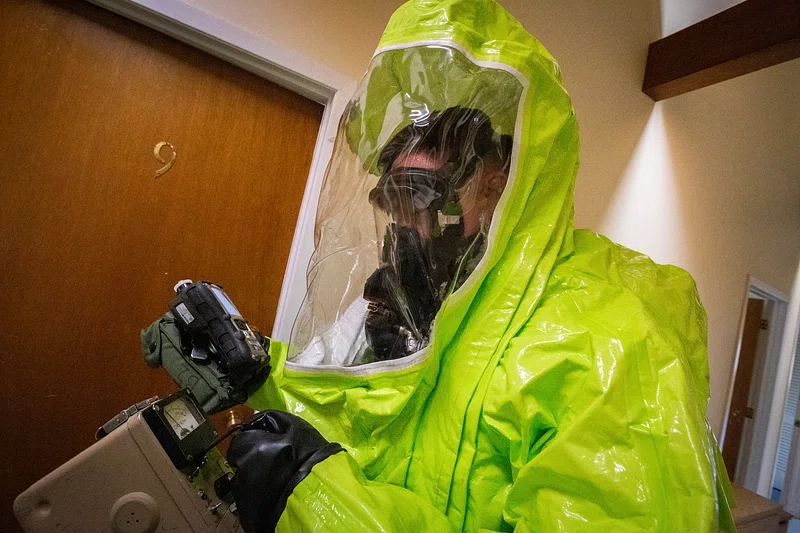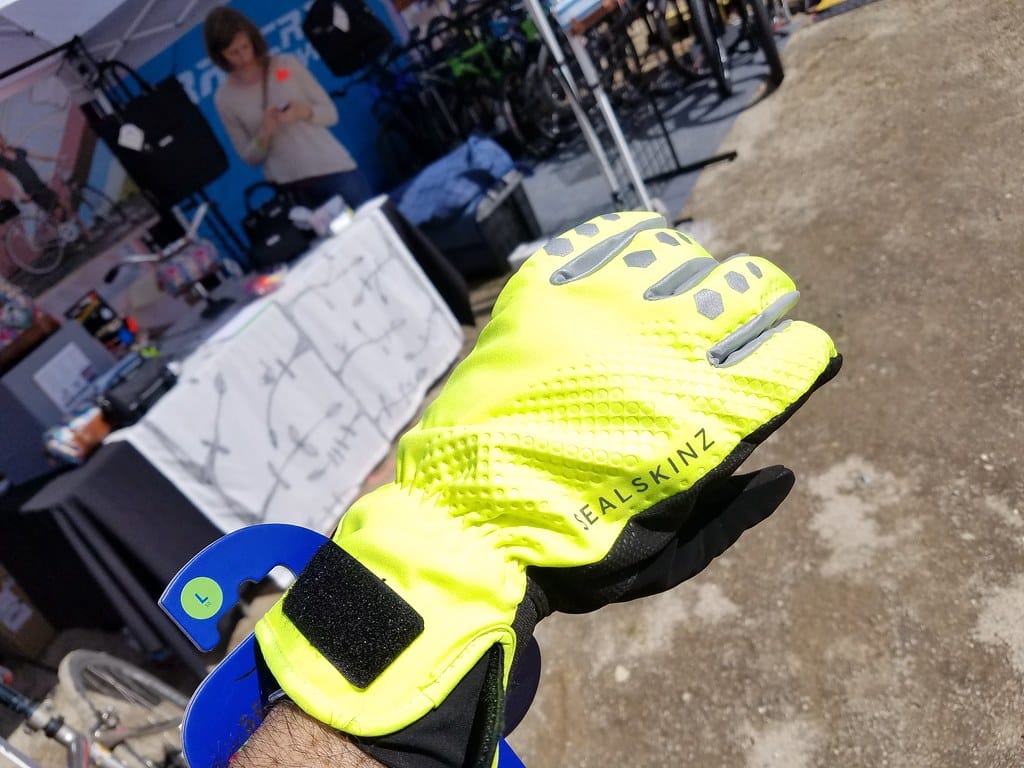
内容
隐藏
Industry Applications: Chemical PPE for Pharma, AgriChem, Oil & Gas, Paints, and Labs
Chemical protective clothing isn’t one-size-fits-all.
Different industries face different chemical hazards, contact durations, temperatures, and operational constraints.
This guide outlines how to select the right PPE by industry application—so protection matches the real-world environment.
Why Industry-Specific PPE Matters
- Misaligned PPE increases exposure risk and discomfort.
- Regulatory requirements vary between sectors.
- Some chemicals attack specific materials others resist.
- Worker mobility and visibility needs change by task.
Matching suit type, material, and accessories to the job site is critical.
1. Pharmaceutical & Biotech
Hazards
- Active pharmaceutical ingredients (API)
- Fine powders and chemical dusts
- Solvents and alcohols (e.g. IPA)
- Cross-contamination risks
Recommended PPE
- Type 5/6 disposable coveralls (e.g. Tyvek® or PE laminate)
- Antistatic, non-linting fabric
- Elastic hoods, cuffs, and ankles
- Chemical-resistant gloves (nitrile, neoprene)
- Optional: integrated boot covers
Notes
- Breathability and particle barrier balance is key
- Sterility and cleanroom compliance may be required
2. Agrochemical Production & Spraying
Hazards
- Pesticides, herbicides, fertilizers
- Acids, alkalis, and surfactants
- Mist or splash exposure
Recommended PPE
- Type 3/4 suits (e.g. Tychem® 2000 or ChemMax® 2)
- Hooded design with front flap seal
- Butyl or nitrile gloves
- Full-face respirator or PAPR
- Anti-fog goggles
Notes
- Must withstand field abrasion and UV exposure
- Respiratory PPE essential during spraying
3. Oil & Gas / Petrochemical
Hazards
- Hydrocarbons, solvents, and crude oil
- Hydrogen sulfide (H₂S), corrosive gases
- Static discharge risk
- Flash fire and vapor exposure
Recommended PPE
- Type 3/4 FR-rated suits (e.g. Tychem® 6000 FR)
- ARC-rated coveralls for dual protection
- Chemical-resistant outer gloves + cut protection
- Steel toe chemical boots
- Respiratory protection for confined space work
Notes
- Dual hazard protection (chemical + fire) required
- Must comply with NFPA 2112, ASTM F1506, or EN ISO 11612
4. Paints, Coatings & Surface Treatment
Hazards
- Organic solvents, isocyanates
- Acetone, xylene, MEK
- Overspray and vapor exposure
- Static build-up
Recommended PPE
- Type 4/5 suits with anti-static properties
- Sealed seams and chemical-resistant zipper flaps
- Long nitrile gloves and disposable overboots
- Half-mask respirator or full hood depending on ventilation
Notes
- Suit must resist chemical softening from solvents
- Comfort critical for detailed finishing tasks
5. Laboratories & Research Facilities
Hazards
- Reagents, acids, bases
- Unknown compound mixtures
- Biological + chemical dual risks
- Short-term splash exposure
Recommended PPE
- Lab coats for low-risk work
- Type 6 disposable suits for spill response
- PE-coated gowns for wet chemical tasks
- Safety goggles + nitrile gloves
- Shoe covers and face shields if needed
Notes
- Easy donning/doffing reduces contamination
- Consider splash-only vs full enclosure scenarios
Comparison Table by Industry
| Industry | Common Hazards | PPE Type | Suit Example |
|---|---|---|---|
| Pharma | Powders, solvents | Type 5/6 | Tyvek® 500, SMS |
| Agrochemical | Pesticide splash | Type 3/4 | Tychem® 2000 |
| Oil & Gas | Solvent + fire | Type 3/4 + FR | Tychem® 6000 FR |
| Paint/Coating | Solvent spray | Type 4/5 (anti-static) | ChemMax® 3 |
| Laboratory | Mixed chemicals (light duty) | Type 6 or coats | PE-coated lab suits |
What to Consider When Choosing Industry PPE
- Chemical type and concentration
- Contact form (vapor, splash, mist)
- Duration of exposure
- Fire, heat, or static hazards
- Need for sterility or non-shedding
- Compliance with industry regulations
Questions to Ask Suppliers
- What industries is this suit commonly used in?
- Does it meet sector-specific standards (e.g. EN 14126 for biotech)?
- Is the suit anti-static, FR, or chemical-rated—or all three?
- Has it been field-tested in my application type?
- Can it integrate with my existing respirators or gloves?
Conclusion
Every industry faces unique chemical hazards—and requires tailored PPE solutions.
Choosing the right suit means understanding the job, the risks, and the regulations that apply.
Select by scenario, not just by spec sheet.
Email: [email protected]
Website: www.workwearsolutions.net
Zion Zhang
founder of Workwearsolutions, delivers quality custom workwear and PPE globally.
Recent Posts
Share the Post:
 Fatigue-Monitoring Smart Vests2025年12月23日Data-Driven Fatigue Prevention for Food Processing and Cold […]
Fatigue-Monitoring Smart Vests2025年12月23日Data-Driven Fatigue Prevention for Food Processing and Cold […] 100-Wash Antimicrobial Durability: Long-Lasting Hygiene Protection for Food and Healthcare Industries2025年12月20日Food processing plants and healthcare facilities are […]
100-Wash Antimicrobial Durability: Long-Lasting Hygiene Protection for Food and Healthcare Industries2025年12月20日Food processing plants and healthcare facilities are […] Future Reflective Materials: Adaptive Visibility for High-Mobility and High-Risk Work Environments2025年12月19日Modern industrial workplaces are evolving rapidly. […]
Future Reflective Materials: Adaptive Visibility for High-Mobility and High-Risk Work Environments2025年12月19日Modern industrial workplaces are evolving rapidly. […] Next-Gen FR Fabrics: Lighter, Softer, and More Durable Flame-Resistant Workwear for Long Shifts2025年12月18日For decades, flame-resistant (FR) workwear has been […]
Next-Gen FR Fabrics: Lighter, Softer, and More Durable Flame-Resistant Workwear for Long Shifts2025年12月18日For decades, flame-resistant (FR) workwear has been […] Nano-Coatings Reduce Washing Frequency: Smarter Workwear for Cleaner, More Efficient Operations2025年12月17日Industrial workwear is no longer evaluated solely on […]
Nano-Coatings Reduce Washing Frequency: Smarter Workwear for Cleaner, More Efficient Operations2025年12月17日Industrial workwear is no longer evaluated solely on […] Self-Healing Fabrics: The Future of Durable Protective Workwear in Extreme Industries2025年12月16日Self-healing fabrics represent one of the most […]
Self-Healing Fabrics: The Future of Durable Protective Workwear in Extreme Industries2025年12月16日Self-healing fabrics represent one of the most […]
CONTACT US
- Feel free to contact us any time. We will get back to you as soon as we can!
- +86-17330061805
